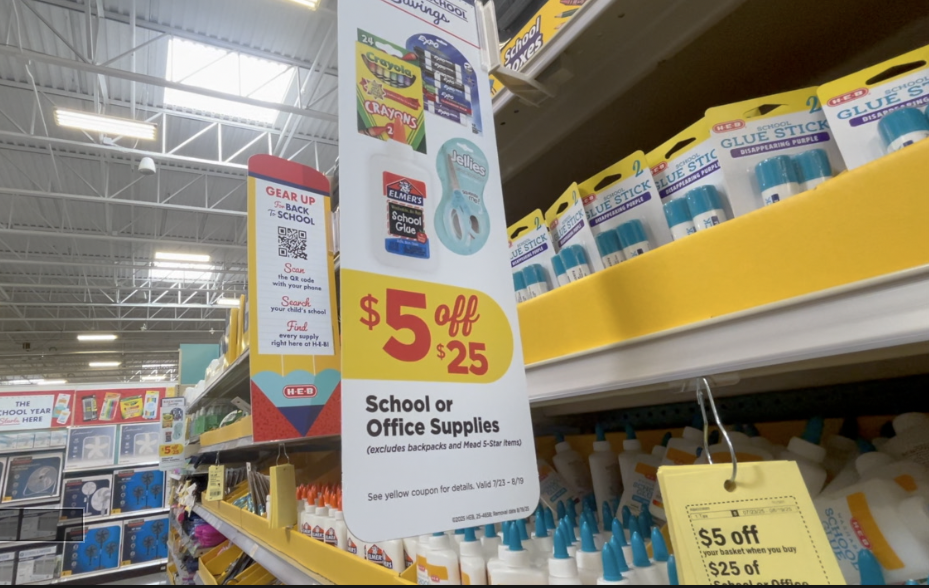WACO, Texas (KXXV) — Second grade teacher Emily Holt reveals how she saves on classroom supplies, while financial expert Bill Dindy explains the hidden risks of buy now, pay later services that parents should consider before back-to-school shopping
- School supplies such as markers, pencils, glue sticks, etc. are overall at a reasonable price, but they can add up
- The option of buy now, pay later gives consumers smaller payments within a four-20 week span, depending on the price
- A drawback to buy now, pay later is returning items. It's much more difficult than just using a regular credit card
BROADCAST TRANSCRIPT:
Second grade teacher Emily Holt is heading into her fifth year of teaching at Hillcrest Professional Development School. She keeps plenty of school supplies on hand throughout the year since kids can go through a lot of markers, crayons and paper.
Holt has a method that keeps her under budget and relies on her school community for support.
"A lot of times after school supplies has been on sale like at Target or things like that they have like discounted things and so I'll wait a little bit until they have those discounts and then it's cheaper, but usually during the summer before I come back is when I do my big stock on things," Holt said.
The teacher appreciates the support she receives from the school community.
"We have a really great set of parents at our school, and our principal is awesome too with buying us some things that we might need and so I haven't really had a need to buy much on my own so I'm really thankful for that and just for our community of staff and kids here that just really pull together to help each other out," Holt said.
She also has an Amazon Wishlist for anyone who wants to help buy supplies for her class.
Watch Bill explain the hidden risks with payment options:
As back-to-school shopping begins, many parents are considering buy now, pay later options to manage expenses. This payment method breaks up one big payment into smaller payments paid within four to 20 weeks without interest.
25 News spoke with financial expert Bill Dindy to understand the benefits and drawbacks of this approach.
"Buy now pay later can be a less expensive way of buying things, and oftentimes it's an automatic charge, so we don't have to worry about missing a payment. That automatic payment will come out of our bank account or from our be charged to our credit cards that we have on file. So it is a convenient way to get oftentimes very low cost interest to be able to afford our supplies right now when we need them," Dindy said.
However, Dindy warns about potential downsides to these payment plans.
"The negative is that we may be lured into spending more money than we can actually afford. The buy now pay later, it's affordable monthly payments, affordable weekly payments. And you're like, 'I can afford $1 or I can afford $10 but I can't afford $10 100 times.' And so while we can always afford another $1 or another $10 if we have 1000 of these hitting us every week, we can't afford it. And so for many people, they aren't tracking what they're spending on the now pay later, and they overspend because it doesn't seem like that much more. And for a lot of the people doing it, they feel the need to be able to provide right now for the children versus if we had an envelope of cash, you start separating the needs from the wants," Dindy said.
Consumers should also be aware that returning items purchased through buy now, pay later services can be more complicated. It could take weeks to exchange a product or stop payments, without the same protections offered by credit cards.
This story was reported on-air by a journalist and has been converted to this platform with the assistance of AI. Our editorial team verifies all reporting on all platforms for fairness and accuracy.





